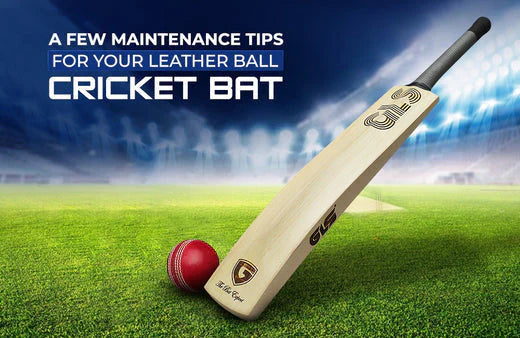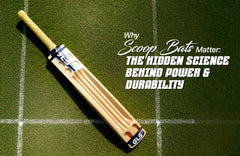Maintenance Tips for Your Leather Ball Cricket Bat Last for Years

Ask any batter, what is the favourite thing in their heavy cricket kit? The most probable answer would be their bat. Among the great work ethics of the greatest batsman on the planet, Sachin Tendulkar, the meticulous care for his bat was very famous. He knew how to fix minor issues, how much knocking is required and other essential maintenance works. Owning a fine cricket bat is one thing, but keeping it well-functioning is just as important. If you are aiming to become a professional batsman or play cricket at the club level, you might need a leather ball cricket bat. Whether it is lightweight English willow or the denser Kashmir willow, every bat needs to be maintained properly, else it cannot withstand the high impact from the ball. In this blog, we are sharing important tips on how to maintain your cricket bat so that it lasts longer.
Why Leather Ball Cricket Bat Need Maintenance
Unlike the tennis ball cricket bat, the leather ball cricket bat is subject to a hard ball at high speed. Whether you are training in the nets or playing at the club, the force exerted by the leather ball leaves a huge impact on the bat. After several hits, one can notice the red patches on the front-lower surface. It weakens the impact resistance of the bat. Any bat is most vulnerable at the joint of the handle and the shoulder, and when the ball hits at the joint, the bat may get disjointed, which results in breakage. This can be prevented by maintaining the bat regularly and making it a part of the routine.
Key Tips for Maintaining Leather Ball Cricket Bat
Knocking-in
Knocking is the process by which the bat is hardened by using a hammer. To apply an optimal force, which is neither too hard nor too soft, knock the hammer at an angle. This step is basic for every leather ball cricket bat because it is soft and not ready to face the hardness of leather balls. The knocking must be done only on the edges and face, not the toe and back.
Use Linseed Oil
Oiling of the bat is crucial to maintain its moisture level. Without oiling, the bat dries out, leading to cracking. Linseed oil is best suited for cricket bats. Apply an even coat on the face, back and edges. Do not apply too much oil else it may become too soft to hit powerfully. Before and after a long season is the ideal time to apply oil.
Store in Cover
When the bat has been used, don’t make the mistake of leaving it in the open. Store it in the protective cover to avoid exposure to sunlight, dust and rain. Keep away from damp environments to avoid mould growth and termites.
Clean After Each Game
Clean the bat after the training session or the game. Remove dust and moisture with a dry cloth and avoid wet cloth. If there are marks on the bat, a light, wet cloth can be used, given that it is dried after cleaning.
Repair Promptly
The cracks, splits and blemishes must be inspected regularly. If they are found on the surface, it should be repaired promptly.
Use Anti Scuff Sheet and Toe Guard
The anti-scuff sheet is a thin layer applied to the front face and edges. It keeps the bat clean by creating a barrier between the bat and the ball to avoid scuff marks. While toe guard is used to keep the toe of the bat protected when it lies idle.
Conclusion
A leather ball cricket bat is prone to damage when it is not maintained. For the enhanced durability and desirable performance, keeping the bat clean, maintaining its optimal moisture and storing it in a dry place are non-negotiable. At GLS Sports, we provide a great range of cricket bats meant for all forms of cricket. Whether you are playing casually or aiming for a professional career as a batsman, choose from our collection to get the best bat that lasts for years.




